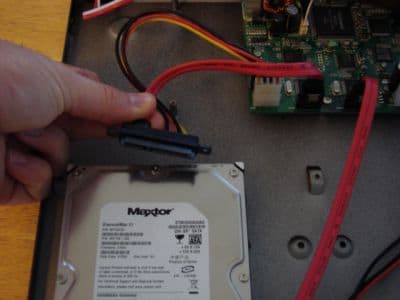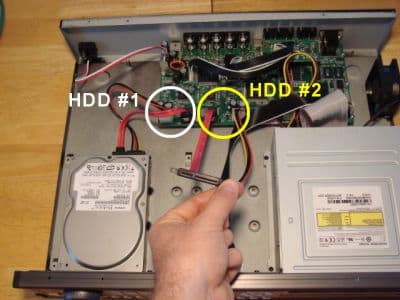How to Choose a Wireless Router
A wireless router is a critical
piece of hardware in a home local area network, or LAN. It can also be
troublesome and difficult to install and maintain. Looking carefully for the
best wireless router can be helpful for those who want to profit from a
wireless high-speed Internet connection in the home or a small business, or
anywhere else that wireless routers are used. Although everyone's shopping
experience is different, here are some common steps to help you choose a wireless
router that will be a good fit for your wireless network.
Ad
Steps

1
Evaluate signal strength. Different wireless routers are
rated for different signal strengths. Even for a small apartment, signal
strength can be an issue even with the most-up-to-date router. Figure out which
one fits your network needs. Signal strength is best evaluated by real-life
tests, and not from manufacturer's published specifications. (see
"Tests" below).
- Understand obstacles in an
interior home environment, as well as the specific distance that the
signal will need to go for use in any particular part of the building.
Ad
- 2
Decide on speed. Make sure the router will support
an existing Internet connection (Cable, DSL, etc.)
- Look at Mbps, or megabits per
second. For the latest routers, the theoretical limit is 600 mbps; most
up-to-date routers support 300 mbps (802.11N standard). The previous
standard (802.11G) is 54 Mbps. Check the manufacturer's documentation or
ask a knowledgeable salesperson about the specifications.
- 802.11N. Find out whether your client
devices all support 802.11N standard. If all of them do, you are safe to
choose 802.11N router. If they don't (and have 802.11G instead), keep in
mind that when N device is used at the same time with G device, effective
speed is greatly reduced.
- 2.4 GHz, 5GHz and non/concurrent dual-band:
- If
you need to use G and N devices at the same time, a dual-band router
will help to avoid interference: you can connect a G device to 2.4GHz,
and an N device to 5 GHz.
- Remember
that the concurrent dual-band router and dual-band client wifi adapter
don't always mean double speed. If your PC has only one Wi-Fi adapter,
you can only connect to one band at a time. Even if you have 2 adapters,
under Windows it doesn't give you double speed, only the maximum of
either.
- 5GHz
gives weaker signal compared to 2.4GHz, especially at longer distance
from router.

3
Test your choice of equipment. Find a real-life speed throughput
and range tests for the models you consider. Specifications give only a
theoretical maximum, while tests will show how it will actually perform. Search
the following website on Google, smallnetbuilder.com/lanwan/router-charts/view
SmallNetBuilder comparison charts and
cnet.com.au/internet-networking/modems-routers/reviews.htm CNet.com.au reviews
that offer test speed throughput

4
Choose encryption. Think about the need for
encryption. Wireless routers often employ WPA or other kinds of encryption to
protect the network from intruders. You may need technical assistance from your
router's manufacturer.

5
Keep in mind compatibility issues. One of the other essential elements
of choosing the best wireless router is to figure out how it will complement
existing pieces of hardware in a home network.
- Look at matching the brand of
a wireless router with the brand of existing network cards. For computer
workstations or other hardware without built-in network capability, some
network cards or cartridges allow the computer to access the wireless
network. When the router matches these small adaptors or cards, the LAN
connection may have better speed.
- Think about matching a video
game console. For example, the Nintendo Wii is a household hardware
element that is often connected to a home wireless network. Although
Nintendo does not promote a specific brand of wireless router,
understanding compatibility with video game consoles can be another
factor in choosing your router and other network equipment (client Wi-Fi
adapters; NAS etc).
- 6
Evaluate customer support. Buy a wireless router from a
company with good customer support. Technical support and assistance may be
critical for installing or dealing with the device.

7
Compare warranties. One strategy for buying the best
wireless router is to select one that will be guaranteed to last a certain
length of time. Look carefully at warranty provisions and make this part of the
pro and con list for specific brands and models.
 CCTV Camera Pros provides the following instructions for our
incase you need to install or replace a hard disk drive. Please follow
the below instructions to install a new hard drive into your
surveillance DVR. Please note that you should first contact CCTV Camera
Pros if you believe that your hard drive is not working properly before
you open up your DVRs case. It does not happen often but from time to
time hard disk drives do go bad like any other electronic component.
CCTV Camera Pros provides the following instructions for our
incase you need to install or replace a hard disk drive. Please follow
the below instructions to install a new hard drive into your
surveillance DVR. Please note that you should first contact CCTV Camera
Pros if you believe that your hard drive is not working properly before
you open up your DVRs case. It does not happen often but from time to
time hard disk drives do go bad like any other electronic component.



















